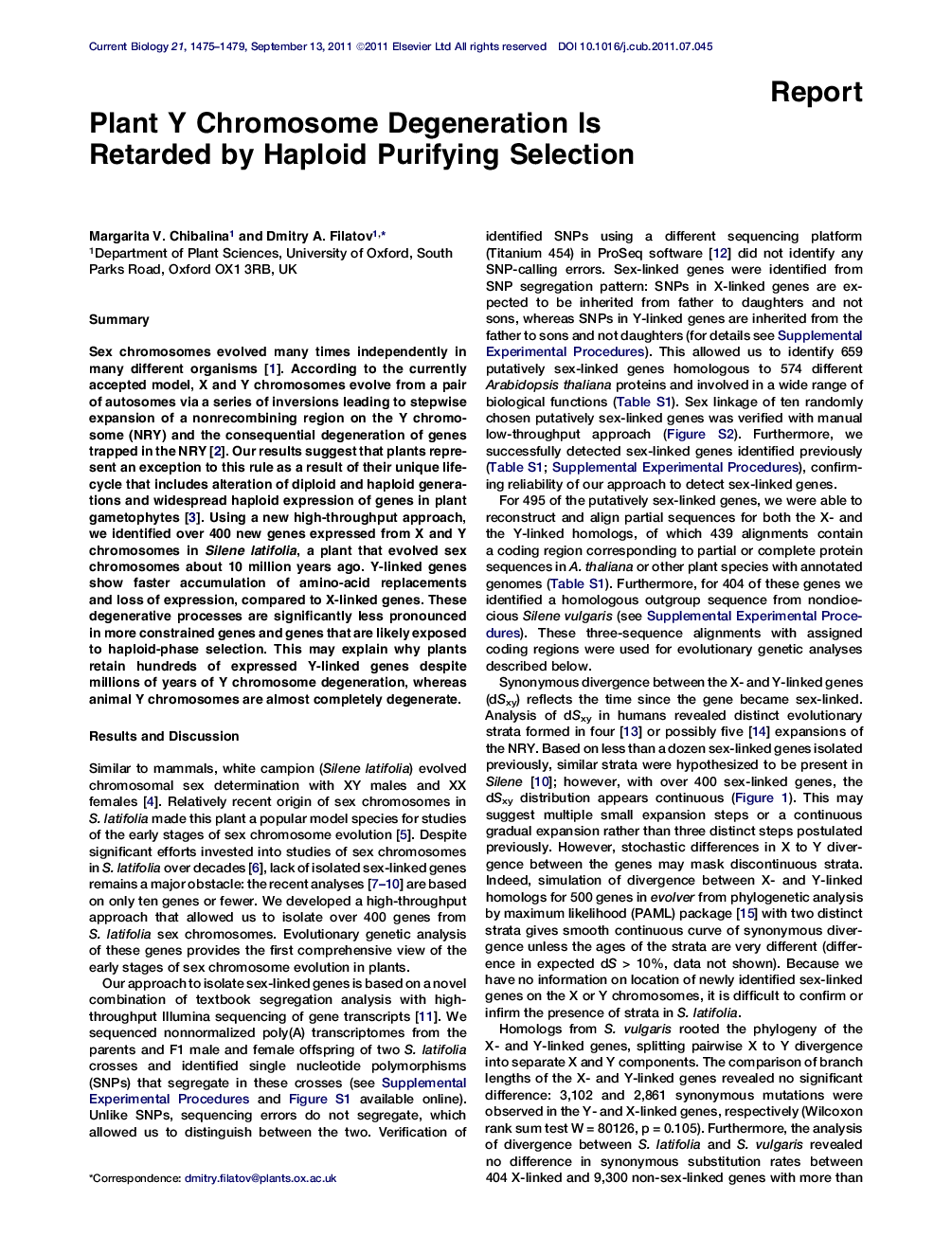| Article ID | Journal | Published Year | Pages | File Type |
|---|---|---|---|---|
| 2043118 | Current Biology | 2011 | 5 Pages |
SummarySex chromosomes evolved many times independently in many different organisms [1]. According to the currently accepted model, X and Y chromosomes evolve from a pair of autosomes via a series of inversions leading to stepwise expansion of a nonrecombining region on the Y chromosome (NRY) and the consequential degeneration of genes trapped in the NRY [2]. Our results suggest that plants represent an exception to this rule as a result of their unique life-cycle that includes alteration of diploid and haploid generations and widespread haploid expression of genes in plant gametophytes [3]. Using a new high-throughput approach, we identified over 400 new genes expressed from X and Y chromosomes in Silene latifolia, a plant that evolved sex chromosomes about 10 million years ago. Y-linked genes show faster accumulation of amino-acid replacements and loss of expression, compared to X-linked genes. These degenerative processes are significantly less pronounced in more constrained genes and genes that are likely exposed to haploid-phase selection. This may explain why plants retain hundreds of expressed Y-linked genes despite millions of years of Y chromosome degeneration, whereas animal Y chromosomes are almost completely degenerate.
► Over 400 new sex-linked genes have been identified in white campion Silene latifolia ► Distribution of X to Y divergence is continuous in Silene, blurring the evolutionary strata ► Y chromosome degeneration occurs via reduced expression and amino acid replacements ► Haploid expression in plant gametophyte slows down loss of expression of Y-linked genes
